Beatrix Potter: Illustrator and Inspiration
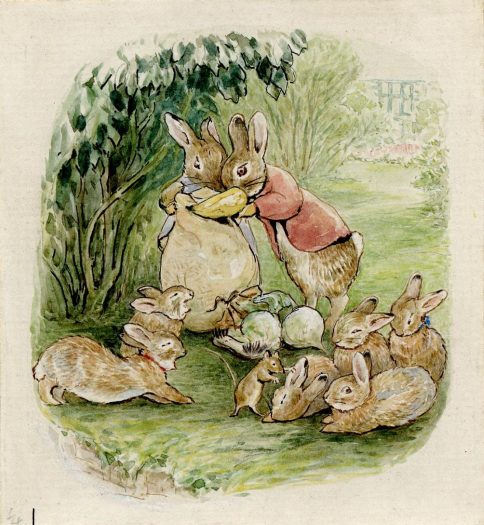
Beatrix Potter is known to people the world over as the creator of the Peter Rabbit books. These are indeed wonderful, but there’s so much more to explore. This blog examines a little of the extraordinary skill and illustrative mastery of this Victorian writer and illustrator, thanks to a recent visit to the Beatrix Potter: Drawn to Nature exhibition.
The show is on until January 2023 at the Victoria and Albert Museum in London (the V&A). A few months back, they commissioned me to film myself painting a Red Admiral butterfly, and this was used as a trail to encourage visits to this wonderful exhibition.
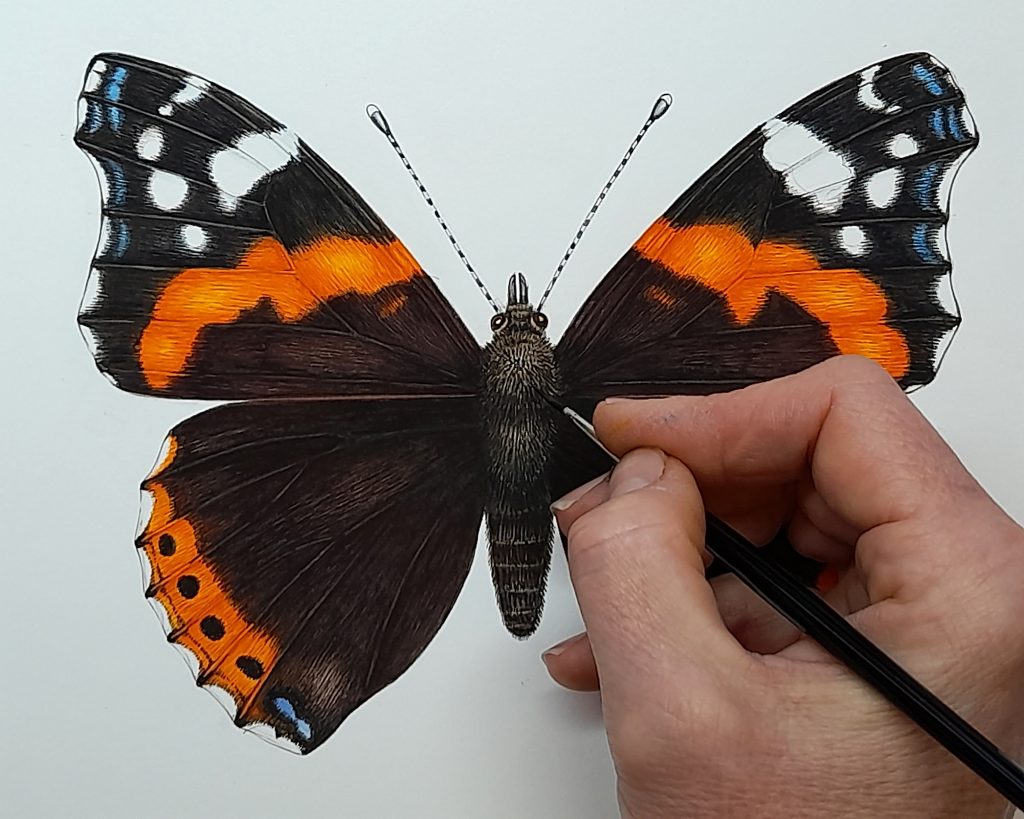
Me illustrating a Red Admiral Vanessa atalanta butterfly
The exhibition, Beatrix Potter: Drawn to Nature is full of sketches, specimens, and original items owned by and drawn by Potter. There’s masses of related material available to view online, including a link to her first sketchbook, kept when she was only 8. Articles on what inspired her, an online version of the show, blogs on how she worked, who she was, her Lake district, and an online version of The Roly Poly Pudding are all available to view.
You can also browse the V&A collections page online, and see more than 2,600 objects, articles, features and collections relating to her work.
Most, but not all of the images in this blog can be seen in the exhibition. And if you go, you will certainly find any number of wonderful things to look at that don’t feature in this blog.
Peter Rabbit Books
Beatrix Potter kept animals her whole life, and drew them obsessively. This can be seen in the paintings of rabbits, mice, squirrels, and frogs in her “Tales of Peter Rabbit” books. Even in hats and clothes; baking, reading newspapers, or getting into mischief, you can see the accuracy in her depiction of these creatures. That’s why the illustrations work so well.
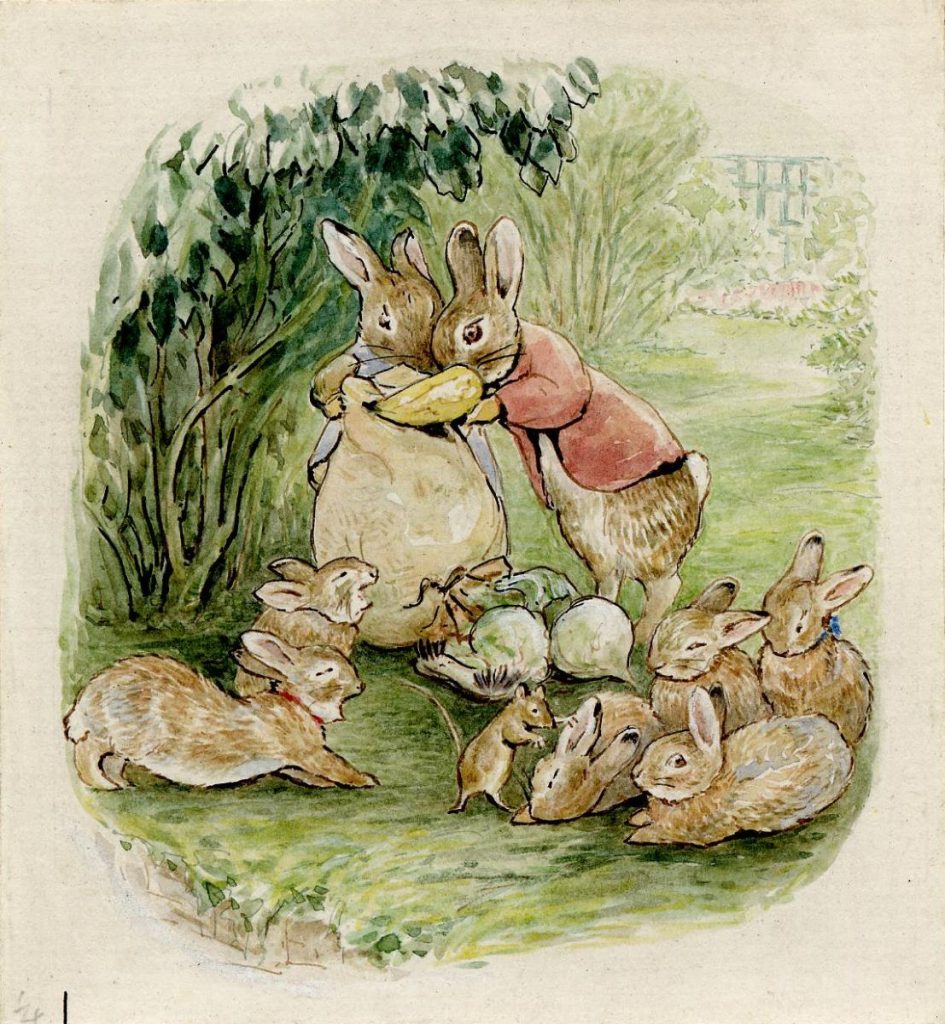
Illustration for p.53 of “The Tale of the Flopsy Bunnies” by Beatrix Potter © British Museum
Her sketches directly inform her story book illustrations. Just compare these studies of the face of a Hedgehog with her illustration of the character of Mrs. Tiggywinkle.
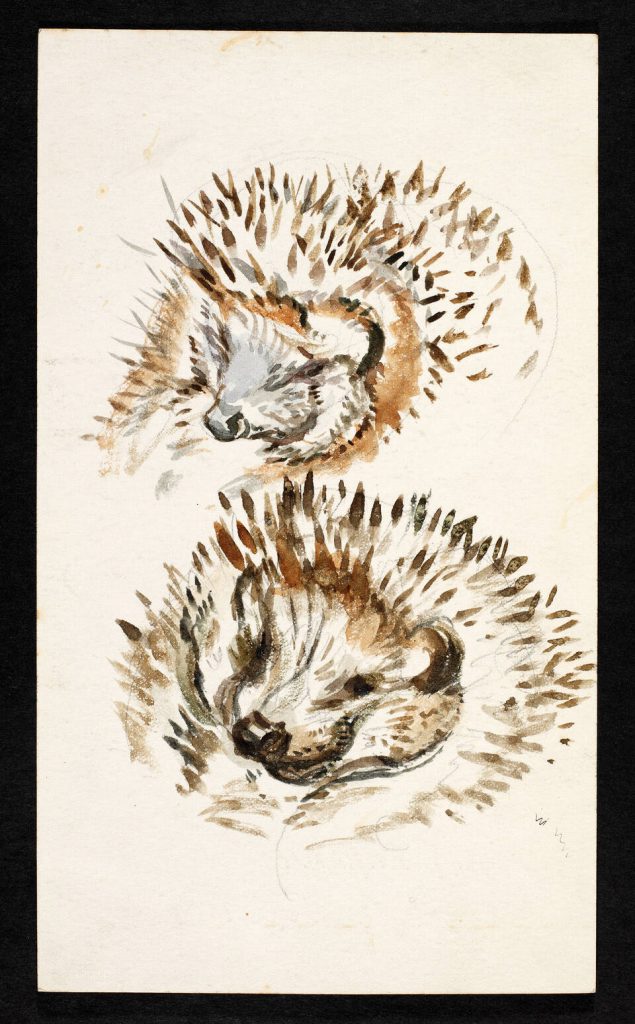
Head studies of a hedgehog by Beatrix Potter © V&A
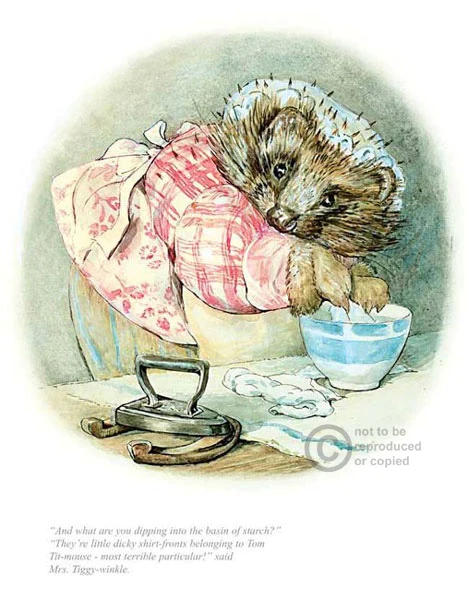
Mrs Tiggywinkle by Beatrix Potter
Insect illustrations
Beatrix Potter drew insects too. I love her collection of bee studies, all on one sheet. Recently, I tackled an illustration of a Garden bumble bee Bombus hortorum. I understand how difficult it can be to make them “look right”. But these ones are perfect. Somehow she combines accuracy with a real lightness of touch. As someone who tends to overwork their illustrations, this is a skill I’d love to emulate.
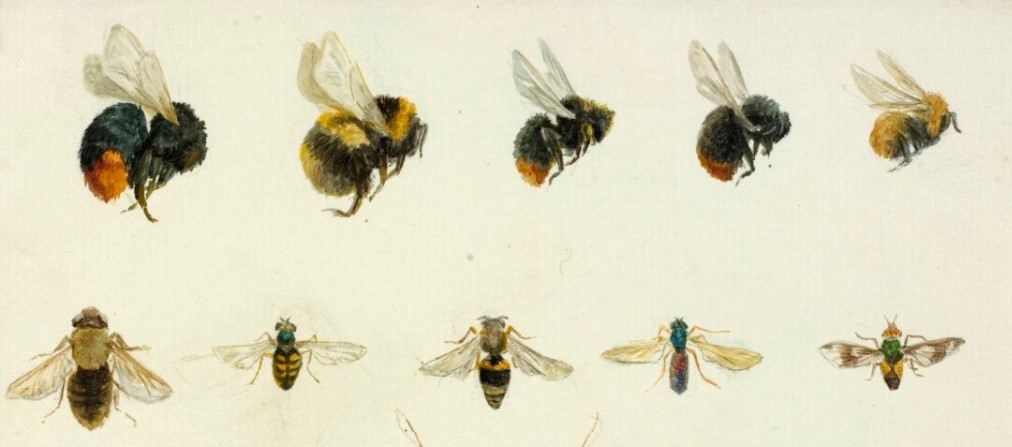
Bee illustrations by Beatrix Potter © V&A
Potter was adept at more detailed insect illustrations, too. She was good at drawing through the microscope, and produced many meticulous illustrations, including this one of a ground beetle.
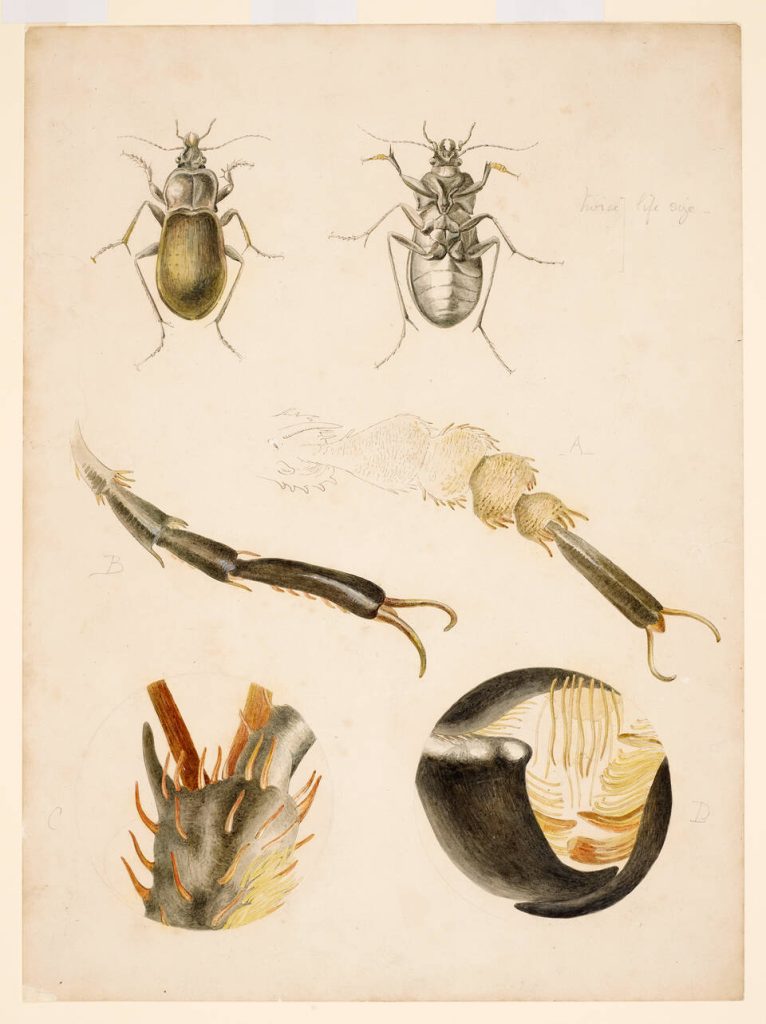
Studies of Carabus nemoralis by Beatrix Potter © V&A
Illustrations of bats
Bats are notoriously tricky to draw. Their faces look odd to us, often seemingly distorted to allow for echolocation. The texture of their wings, thin and fragile yet incredibly supple and strong, is hard to capture on the page. Over the years I’ve been asked to illustrate loads of bats, and have never been overjoyed with the results. Even when I work from real specimens.
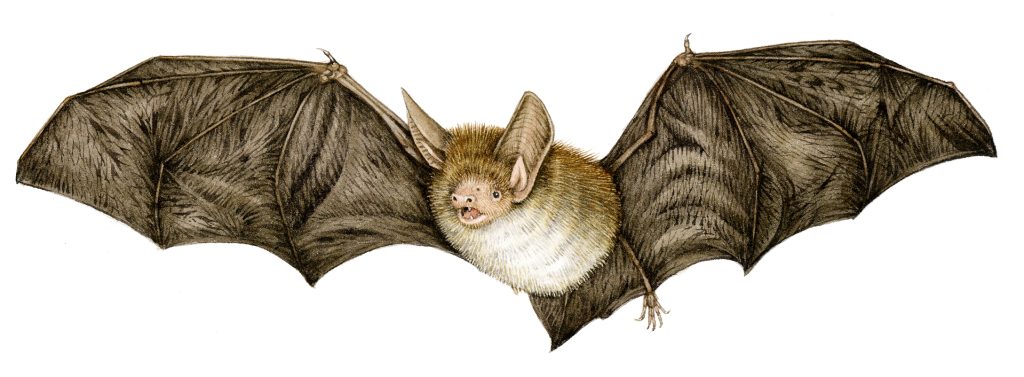
Bechstein’s bat Myotis bechsteinii
Potter’s bat studies, which are clearly done from life, are inspirational. In the illustration below it’s the texture of the wings that I think is particularly good. I also love the second angle she’s chosen to use which isn’t an easy proposition.
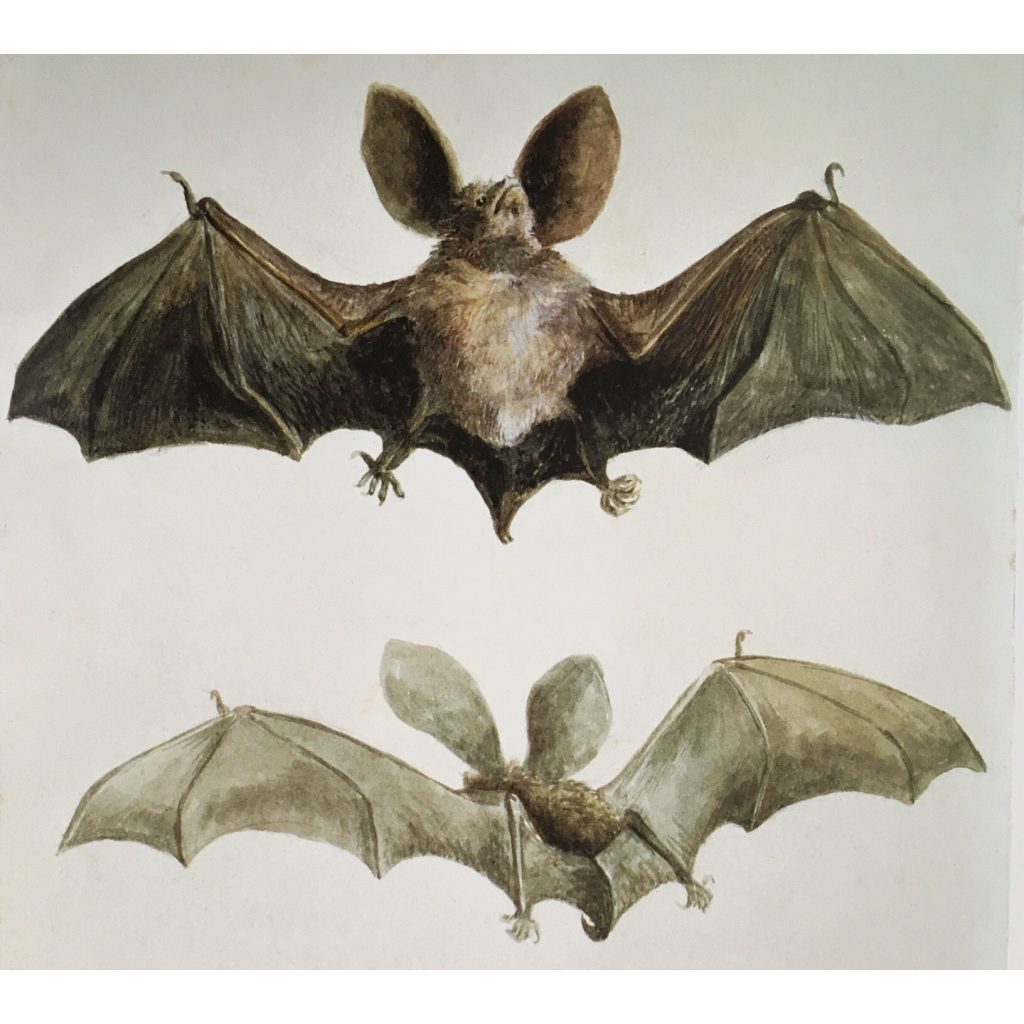
Bats by Beatrix Potter © V&A
I also love the studies of the bat whilst not in flight. On one sheet she combines colour studies and drawings of the bat skull and skeleton. She and her brother kept bats as pets, and when their pets died, she kept their skeletons. In fact, in the V&A’s current exhibition you can see the pelt of her pet rabbit, the animal immortalized in “The Tale of Peter Rabbit”!

Studies of a Bat and its skeleton by Beatrix Potter © V&A
Illustrations of Mice
Potter kept pet mice too, and her studies of these little, active mammals are excellent. They’re another of the animals in her Peter Rabbit Books that always look perfect and mouse-like, even when wearing mob-caps or wielding a poker.
Her wood mouse watercolour is just wonderful, and I’ve referred to it on several occasions when completing my own natural history illustrations.
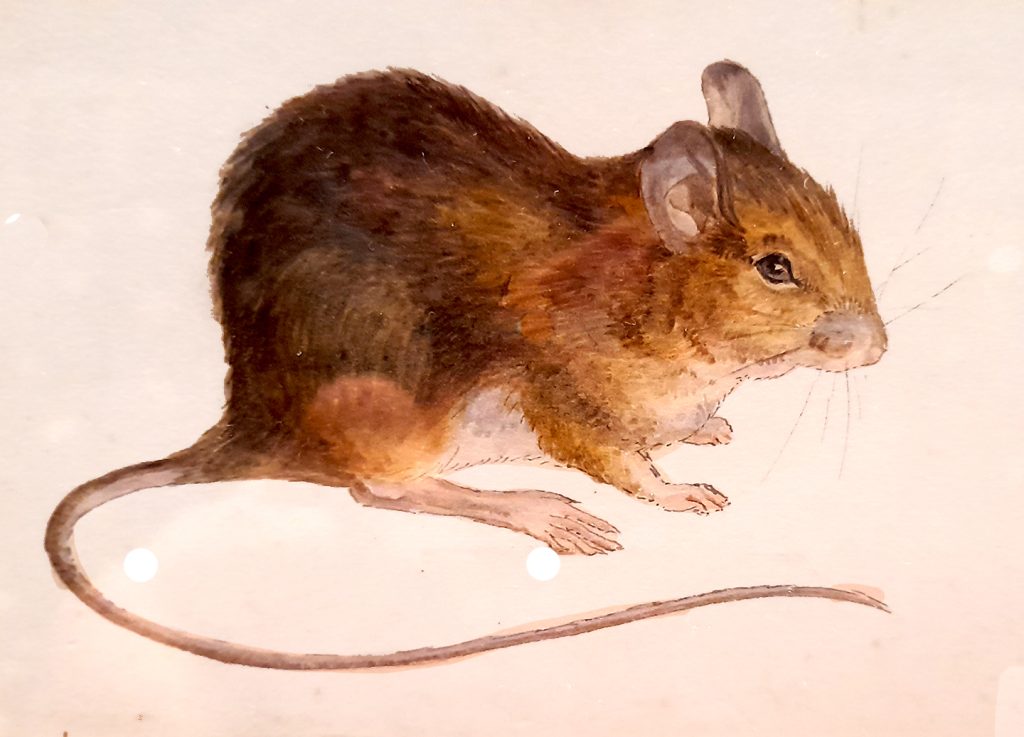
Beatrix Potter Wood Mouse Apodemus sylvaticus © V&A
Wonderfully, as a life-long fan of the Tales of Peter Rabbit, I was delighted to find that the exhibition also had some of the things Beatrix Potter drew for her stories. The waistcoat from “The Tailor Of Gloucester”, stitched by mice, was there. It turns out she drew a waistcoat she saw in the V&A for reference. And, of course, the V&A still own the self-same waistcoat. “The Tailor of Gloucester” is what our family all read on Christmas eve, so this inclusion had extra meaning for me.

Waistcoat from the V&A collection © V&A
Illustrations of Fungi
So Potter’s animal illustrations are wonderful. Accurate, and alive. But what of plants and fungus?
I knew she had worked extensively with fungi, and, had she not been a woman living in Victorian times, her work would have been received with greater favour by the eminent male naturalists of the day. I’ve heard lots of mycologists suggest that many of her illustrations of fungus are yet to be bettered.

Examples of Fungi by Beatrix Potter © V&A
In her study of the Fly agaric above, there’s something almost perfect about the textures. The brittle delicacy of the gills is captured with skill, and I love the way she suggests the grass, soil and remnants of the universal veil at the base of the agaric.
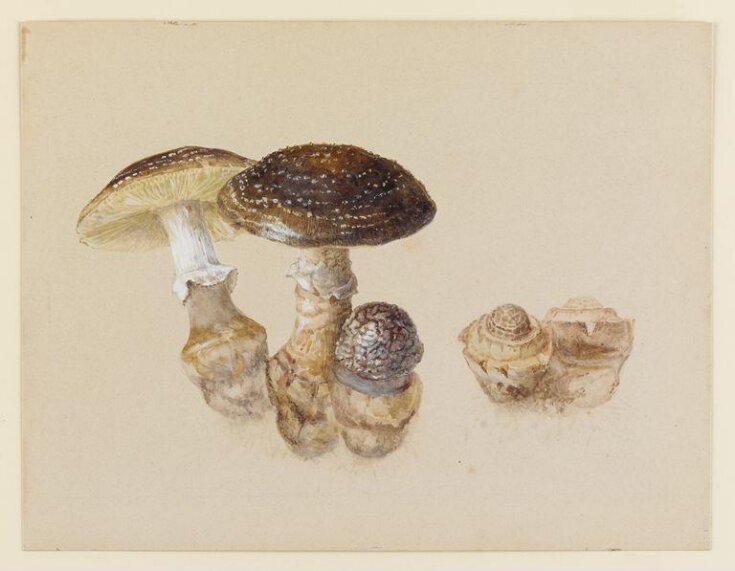
Study of Mushrooms by Beatrix Potter © V&A
Another example shows that she understood the biology of fungus too. The entire growth of the fruiting body is caught here, elegantly, on one sheet of paper. Coupled with the capture of the shine and little markings on the cap, it makes for a beautiful, informative, and accurate illustration.
Illustrations of Plants
Not surprisingly, there were less botanical illustrations on show in the exhibition than of animals, and fungi. That doesn’t mean she couldn’t draw them though, far from it.
Her quick sketch of the Sea holly, shows an understanding of the architecture of the plant. Again, she manages to capture its movement and life. You can almost feel the wind on the shore, where it grows.
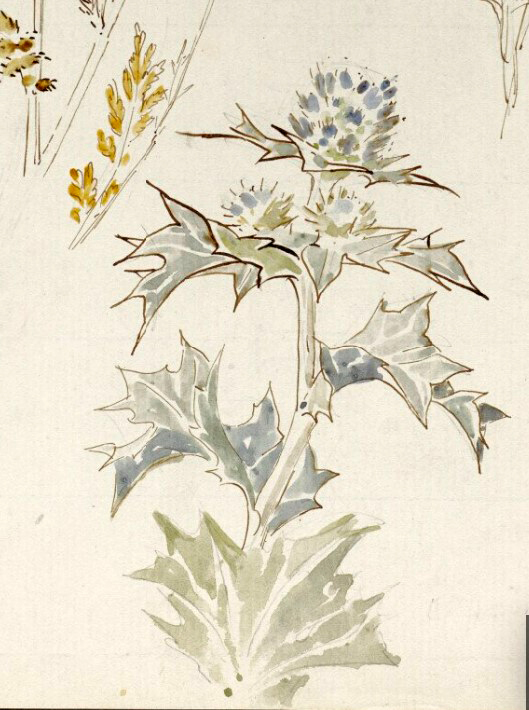
Study of Sea holly Eryngium maritimum by Beatrix Potter © V&A
In comparison, my illustration of the same plant may be more detailed, but is no more Sea-holly-ish than her quick watercolour sketch. In fact, I think her colours are a lot closer to reality.
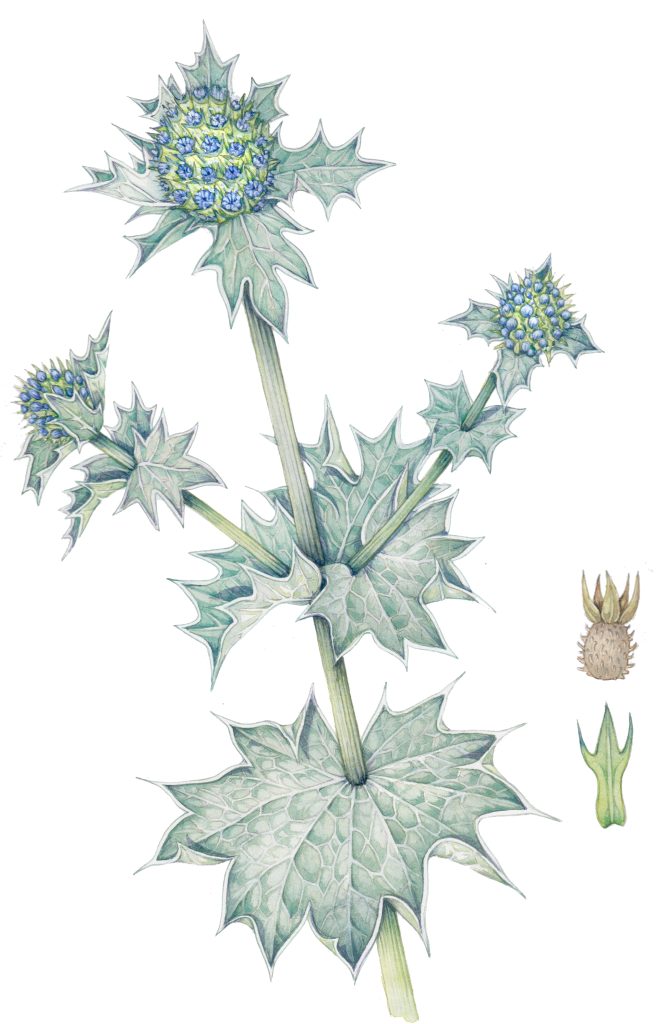
Sea holly Eryngium maritimum
Another of her botanical illustrations that blew me away may well be my favouite image from the exhibition. Beatrix Potter’s sheet of White waterlilies capture the plant exactly. It also captures the feel of the pond below, clogged with roots and leaves. Of the crowded habit of the leaves, and the changing colours of each pad.
The flowers are equally magnificent. No-one enjoys painting white flowers (see my blog on this for more, and for tips), but she’s used the leaves and the background to depict them without muddying the white petals. She’s also included the flower in different stages of its blooming. And as for the way she’s caught the reflection on the water surface on the right hand side… Honestly. It’s a tour de force. Completed with typical modest accuracy.
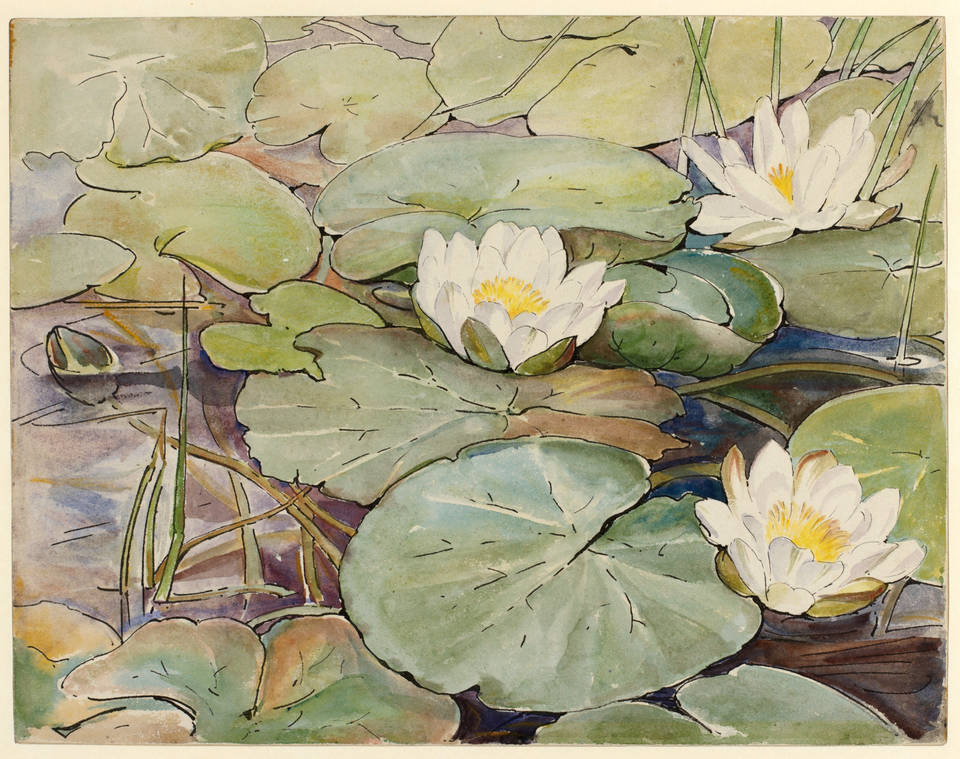
Waterlilies by Beatrix Potter © V&A
Conclusion
All these glorious works inspire me. I love them. I also loved learning more about the woman, her childhood, and her later days farming and giving enormous tracts of Lake district land to the National Trust. Seeing her childhood drawings, her sketchbooks, some of her collection of animal bones. Of course, I also loved the sketches and original illustrations from The Peter Rabbit tales. But there’s so much more to Beatrix Potter than that. The woman is a massive inspiration to me, and a legend.
Visit the exhibition before it ends in early January. It’s not to be missed.


A lovely blog post Lizzie. I am a huge fan of BP. Thank you.
OOh so glad to hear it. What a woman, right?
Hi Lizzie, I believe because of her generosity we could also add philanthropist to the list as well.
A great human being by all accounts.
Regards Peter
Dear Peter, I know. Isn’t it wonderful when your heroes turn out to be even better than you knew? Agree with you entirely.
Thank you for sharing this. We need to be reminded of the beautiful work she did and the wonderful legacy she has left for us all to enjoy in Cumbria.
My grandson will be getting a Beatrice Potter gift for his Christening in two weeks. She will live on through generations to come.
Your Butterfly is as beautiful too. I love your paintings.
Hi Christine
Lucky grandson! I grew up with a Peter rabbit plate and bowl, and still cherish them now, 50 years on! I agree entirely about all that she’s done for Cumbria. Quite visionary, for that time. Thanks you x
Thank you for a wonderful review of Beatrice Potter show. From across the Atlantic such shows are website views only. I will add V&A to my favorite sites. Yours are at the top of the list. How I enjoy your energy. At 84 the body cannot keep up with ideas.
Thank you.
Beth, Im so glad you get to see some of the stuff I talk about, even if only online. You seem to me to be full of energy, Im surprised to hear you’re an octogenarian! Thanks for such a lovely comment. Yours Lizzie
It’s wonderful to see such a gifted artist as yourself honoring Ms Beatrix, thank you! What’s incredible about Beatrix’s work is that she did not have the internet for countless images to study, and what seems like simple sketches in watercolor turn out to be mastery of such a delicate style! Of course, I love watching you on Utube Lizzie, as I’m mad about botanical illustrations!!
I coulnt agree more. She was a phenomenon. Her spiders and fungus illustrations and beyond compare. So glad you share the love, and that you love botanical illustrations and my films. Thankyou for the comment!